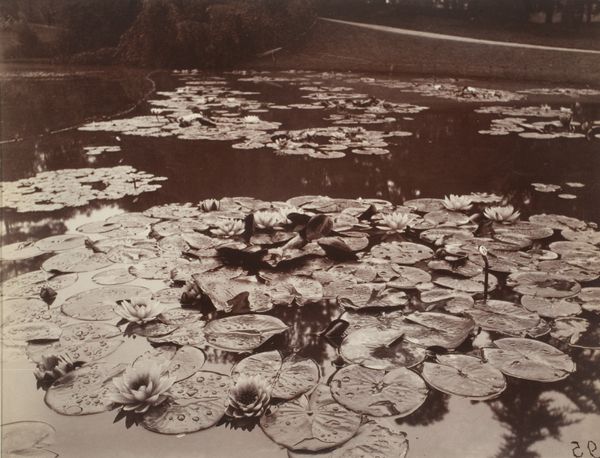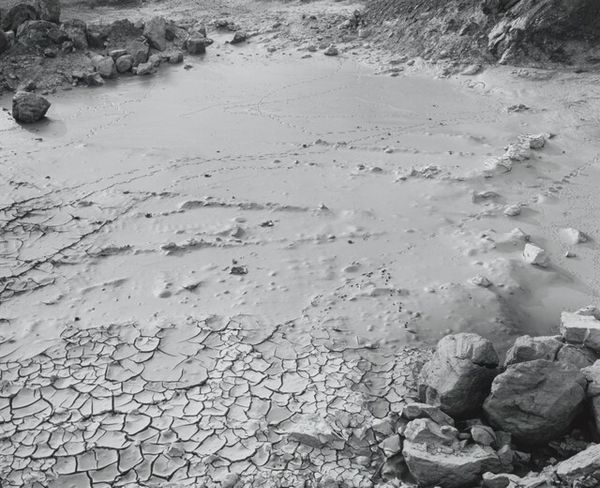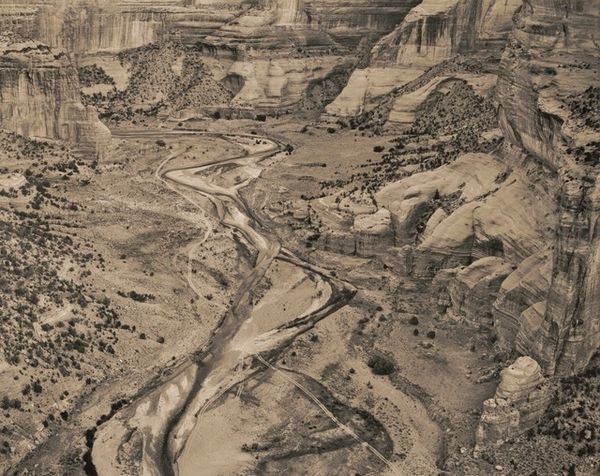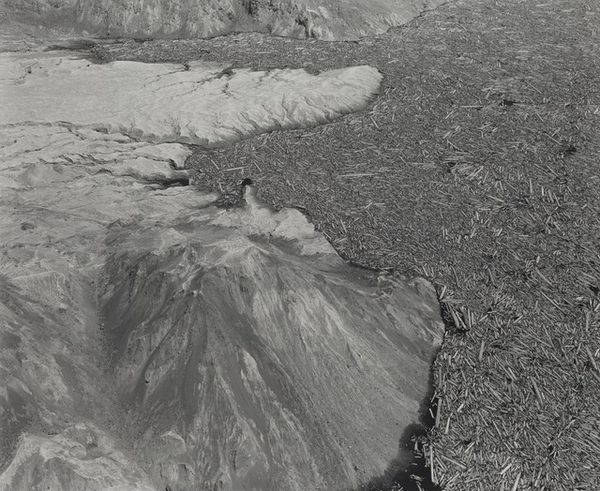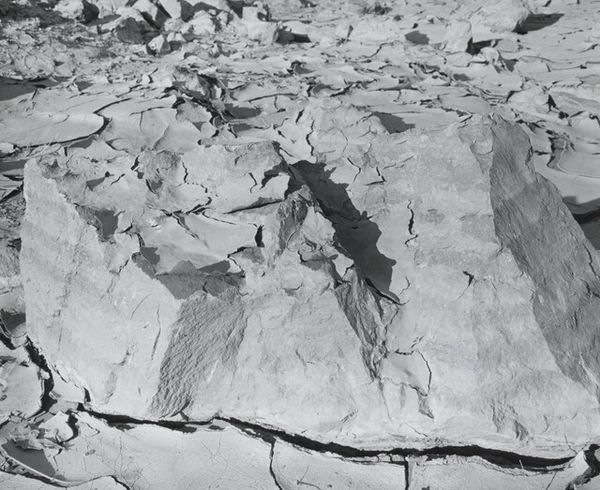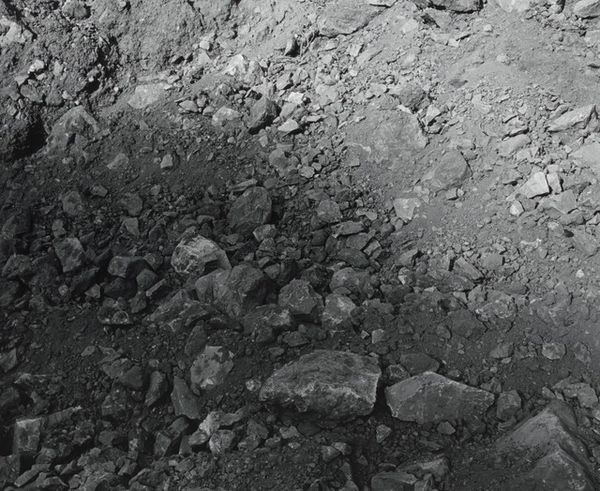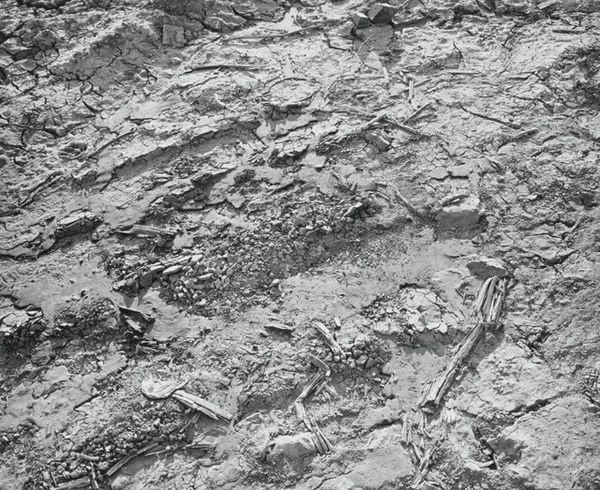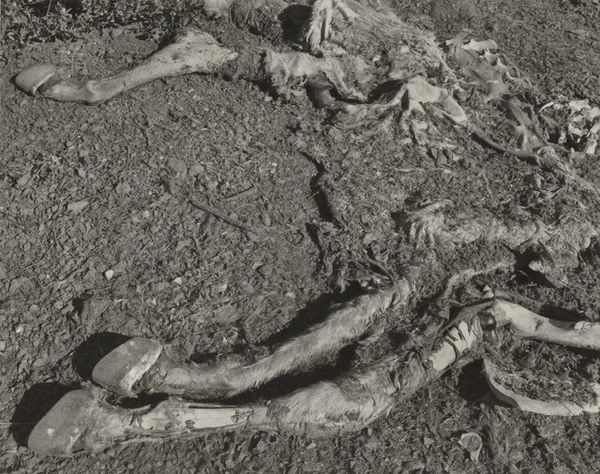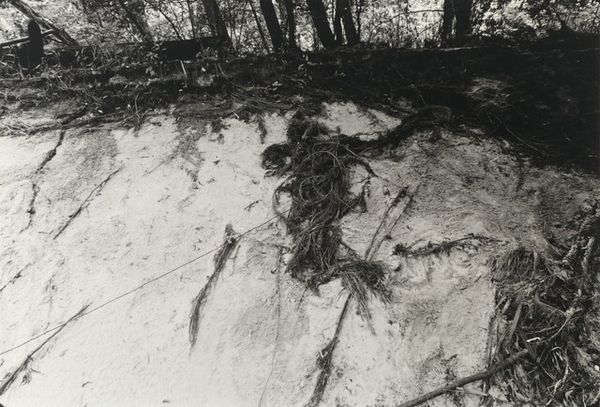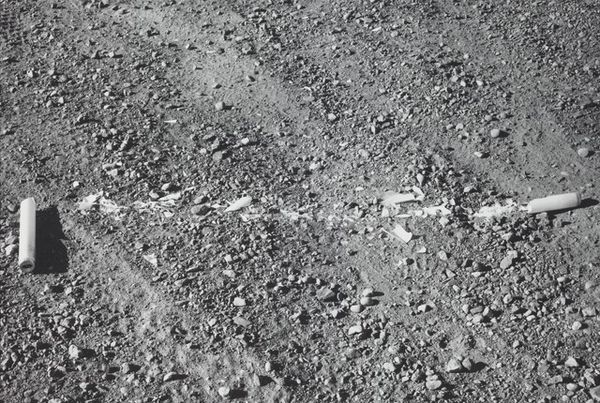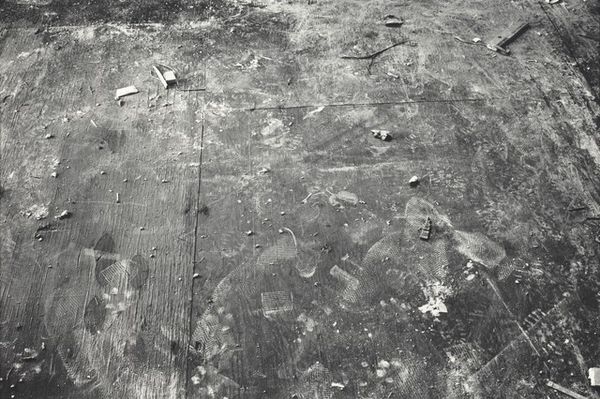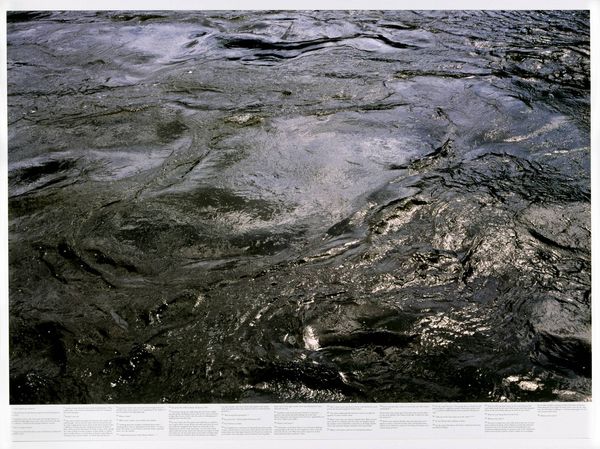
photography, gelatin-silver-print
#
conceptual-art
#
postmodernism
#
landscape
#
landscape
#
photography
#
gelatin-silver-print
#
abstraction
Dimensions: image: 18.8 × 22.9 cm (7 3/8 × 9 in.) sheet: 20.32 × 25.4 cm (8 × 10 in.)
Copyright: National Gallery of Art: CC0 1.0
Curator: Looking at this gelatin silver print, *San Quentin Point, no. 40*, by Lewis Baltz, likely created between 1982 and 1985, I’m struck by the raw materiality and industrial textures it presents. What are your initial thoughts? Editor: My first reaction is one of desolation. It feels like a forgotten space, bearing the marks of systemic neglect, the kind we often see in communities marginalized by economic or political powers. Curator: I agree. Baltz, known for his postmodern, conceptual approach, focuses here on the detritus of industrial processes. The image composition directs our eyes towards these discarded materials. One could argue that by isolating such scenes, Baltz prompts questions about the role of labor in creating and disposing of resources. Editor: Exactly! We can analyze how Baltz uses the landscape genre to document and critique the capitalist structures responsible for the prison’s existence and the environmental decay surrounding it. It pushes viewers to question the broader sociopolitical forces at play, as the image becomes an uncomfortable record of extraction, exploitation, and ultimate abandonment. Curator: Thinking about materiality further, the gelatin silver print process itself contributes to the artwork's meaning. It offers a high level of detail and tonal range, essential for capturing the textures and subtle variations in the industrial landscape. Editor: It definitely makes you think about how the photographic process can also reveal social disparities. There is something deeply disturbing about how a supposedly objective medium is put in the service of showing the indifference towards particular spaces. How the waste becomes a reflection on the invisible people that made the image and those unseen in the space today. Curator: In this image, Baltz's exploration goes beyond mere documentation; he forces a re-evaluation of the photographic medium itself. Editor: The image demands us to understand how those places that have historically been points of exception or outside, now dominate contemporary landscape and life. Curator: I concur completely. Baltz has successfully revealed these processes for consideration and introspection.
Comments
No comments
Be the first to comment and join the conversation on the ultimate creative platform.
